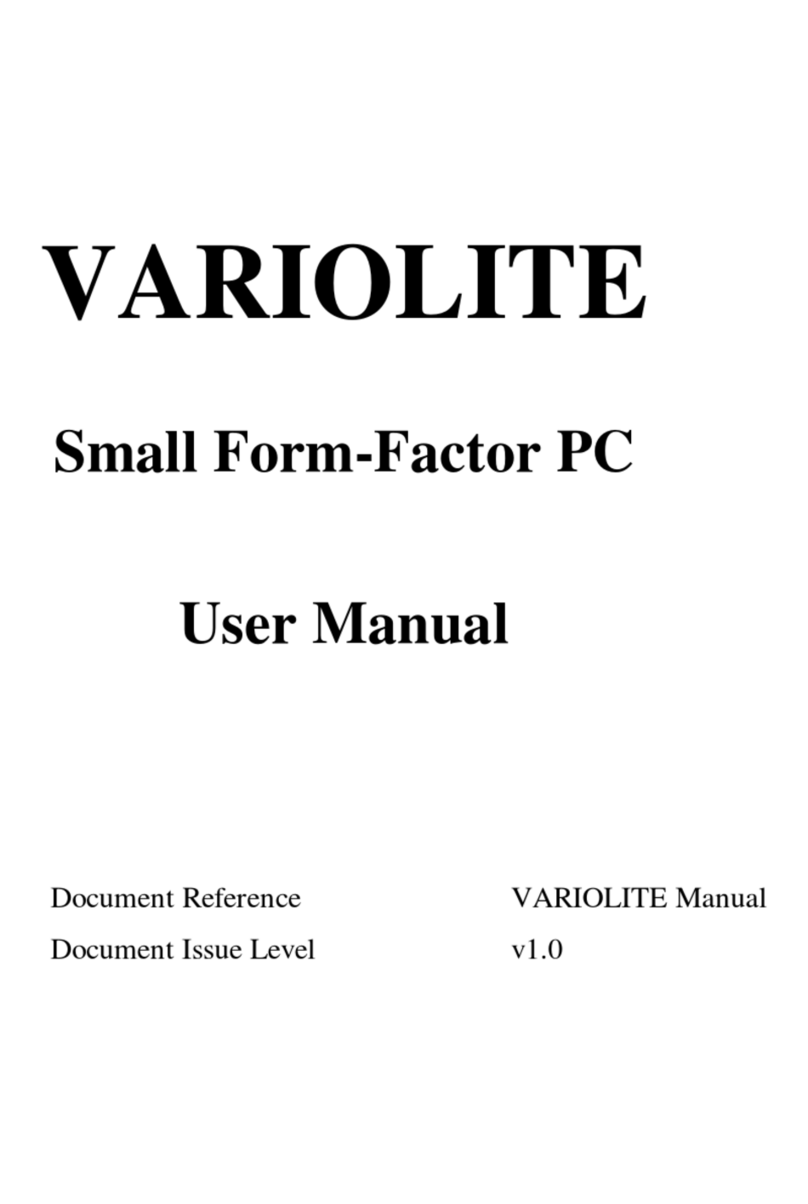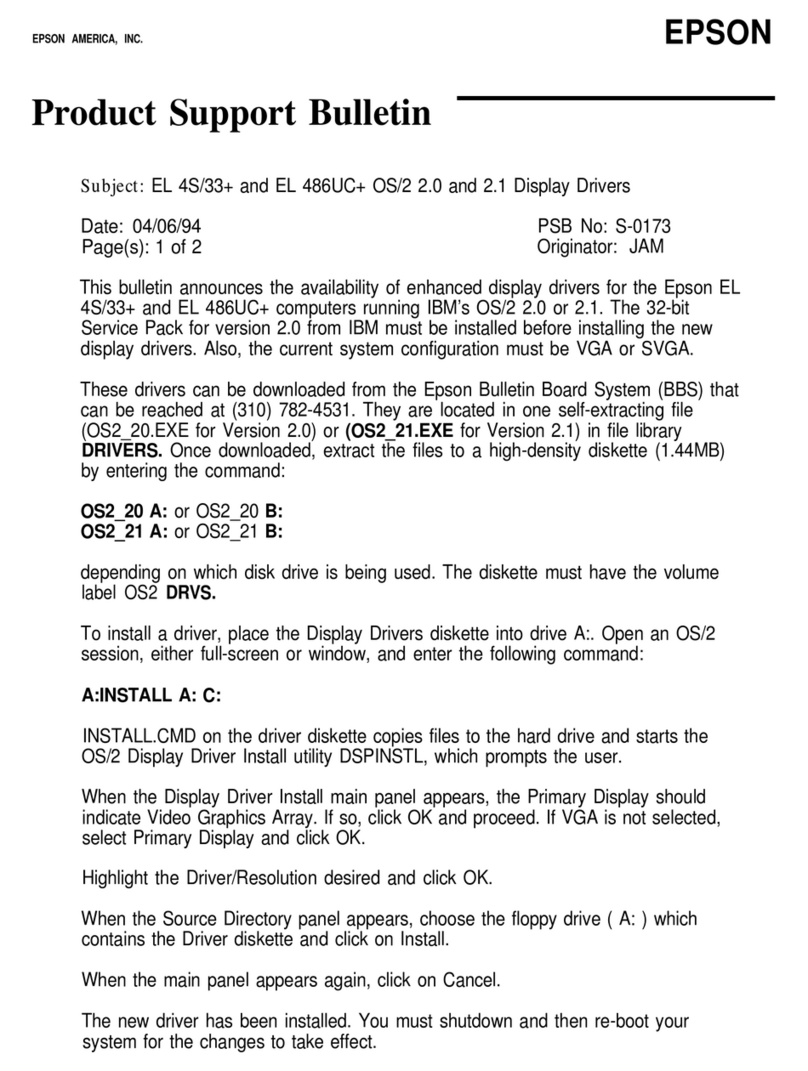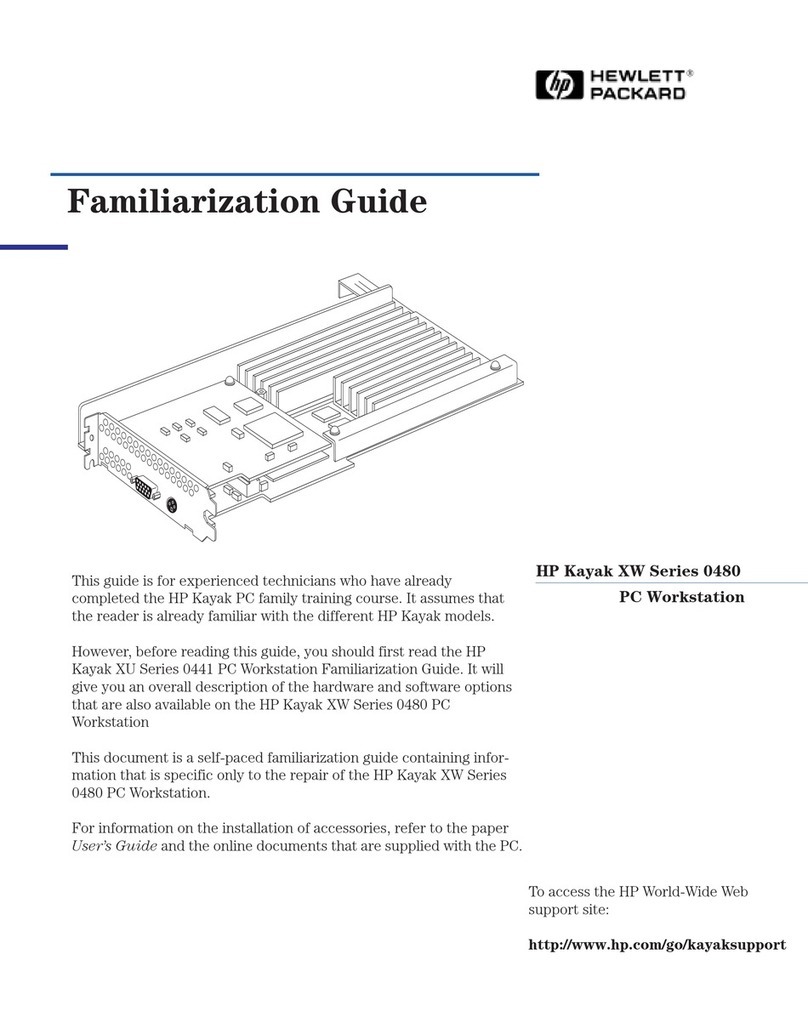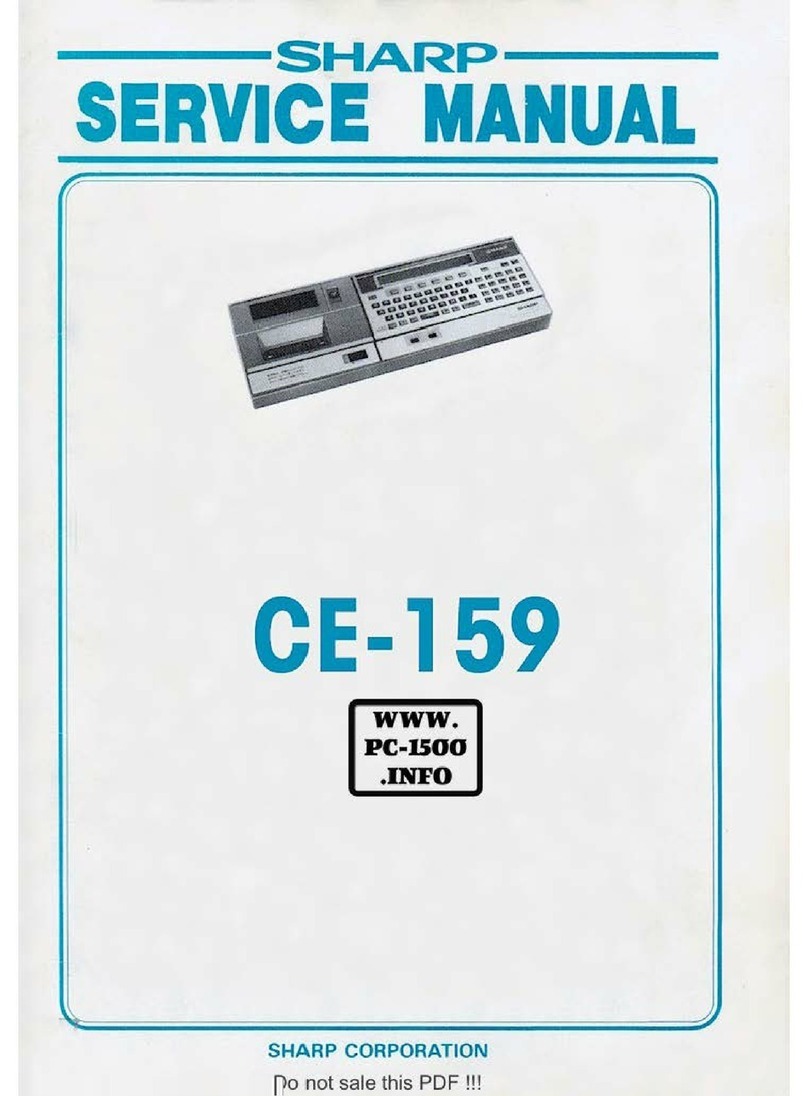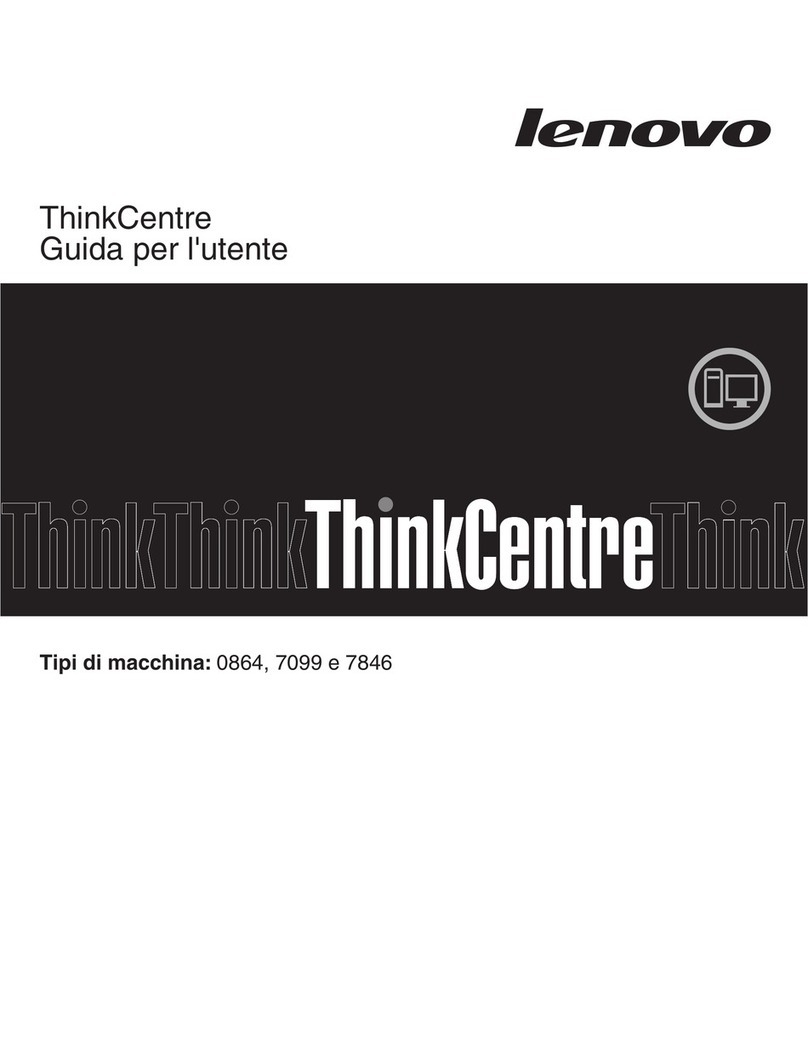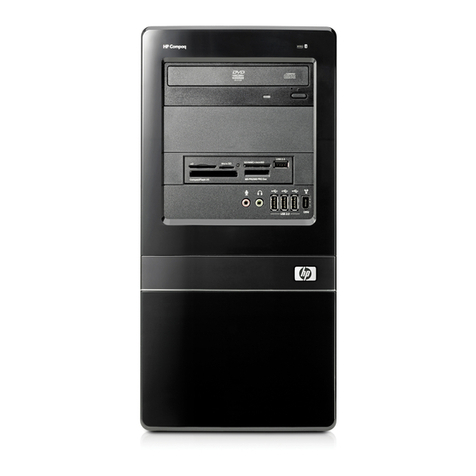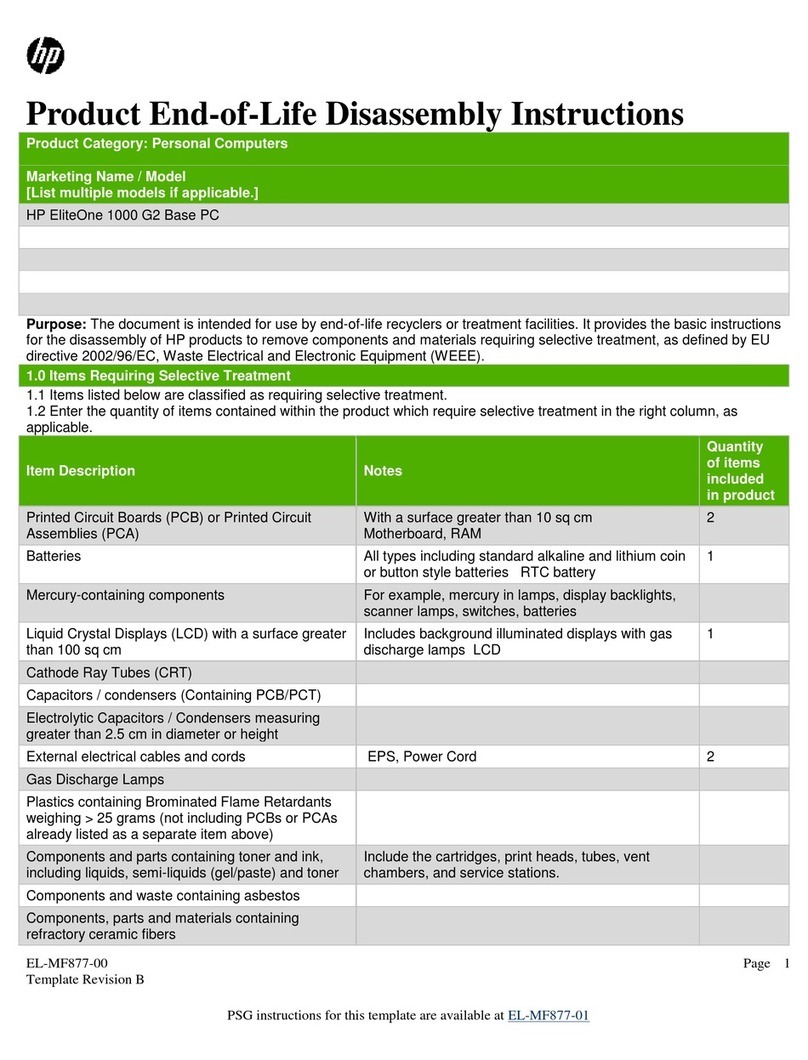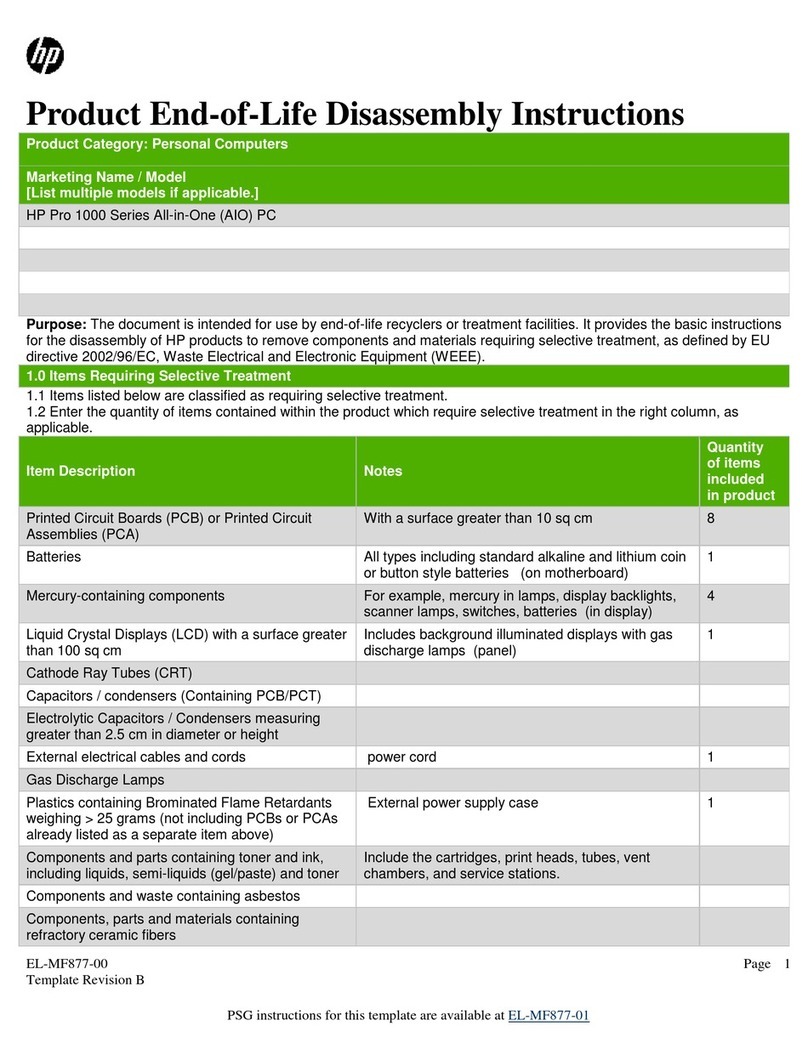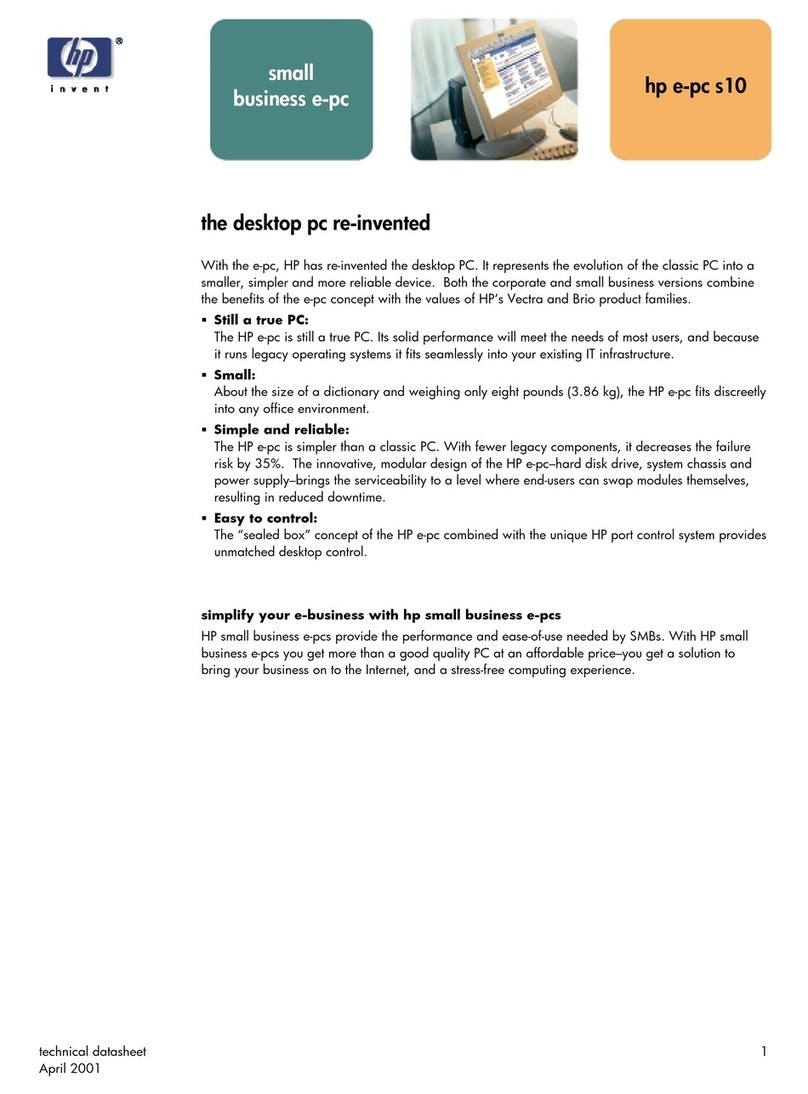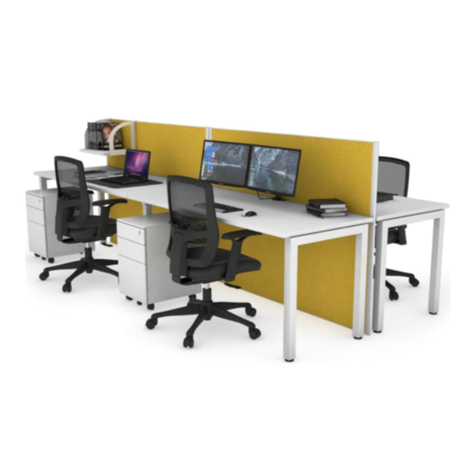BlueChip Electron User manual

ELECTRON
User Manual


ELECTRON
User Manual
Document Part N°0127-1028.doc
Document Reference Electron\..\0127-1028.doc
Document Issue Level 1.0
Manual covers PCBs with the following Issue N°1.x (x is any digit)and above
All rights reserved. No part of this publication may be reproduced, stored in any retrieval system, or transmitted, in any form or by any means,
electronic, mechanical, photocopied, recorded or otherwise, without the prior permission, in writing, from the publisher. For permission in the
UK contact Blue Chip Technology.
Information offered in this manual is believed to be correct at the time of printing. Blue Chip Technology accepts no responsibility for any
inaccuracies. The information contained herein is subject to change without notice. There are no express or implied licences granted herein to
any intellectual property rights of Blue Chip Technology Ltd.
All trademarks and registered names acknowledged.
Blue Chip Technology Ltd.,
Chowley Oak, Tattenhall,
Chester, Cheshire,
CH3 9EX
Telephone : 01829 772000 Facsimile : 01829 772001
www.bluechiptechnology.co.uk

Amendment History
Issue
Level Issue
Date Author Amendment Details
0.1 18/5/99 PMD 1st Issue
1.0 26/2/01 SO CPU Support Updated, Disk-on-chip Additions

COMPANY PROFILE
Blue Chip Technology Ltd. 0127-1028 Page 1
INTRODUCTION..........................................................................................................................................2
MANUAL OBJECTIVES................................................................................................................................2
LIMITATIONS OF LIABILITY......................................................................................................................2
PRECAUTIONS..............................................................................................................................................2
Electro-Static Discharges ............................................................................................................................ 2
On-Board LITHIUM cell (BT1: CR2032) .....................................................................................................3
RELATED PUBLICATIONS...........................................................................................................................3
TRADEMARKS..............................................................................................................................................3
USER GUIDE ................................................................................................................................................4
OVERVIEW....................................................................................................................................................4
Board Level Features...................................................................................................................................5
processor .....................................................................................................................................................5
Processor Upgrade ......................................................................................................................................5
System Memory............................................................................................................................................ 6
BUS Expansion Slots.................................................................................................................................... 6
Electromagnetic Compatibility..................................................................................................................... 6
SPECIFICATION............................................................................................................................................ 7
INSTALLATION...........................................................................................................................................8
CPU INSTALLATION..................................................................................................................................8
MEMORY INSTALLATION......................................................................................................................10
Back panel connecTORS............................................................................................................................ 14
on-board connectORS................................................................................................................................ 15
ECP/EPP Parallel PORT P6 (26 way header)............................................................................................ 18
Bus Connectors.......................................................................................................................................... 22
INTEL I740 AGP GRAPHICS CONTROLLER ............................................................................................ 26
Resolutions supported................................................................................................................................ 26
BIOS ............................................................................................................................................................. 27
Setup Utility............................................................................................................................................... 27
SOFTWARE DESCRIPTION.....................................................................................................................29
BIOS SETUP................................................................................................................................................. 29
MAIN Menu............................................................................................................................................... 29
advanced Hard Disk Features.................................................................................................................... 29
advanced Menu.......................................................................................................................................... 30
Power menu ............................................................................................................................................... 30
BIOS EXTENSIONS SOFTWARE INTERFACE.......................................................................................... 31
Accessing Int 50h Functions....................................................................................................................... 31
Int 50h Function Definitions ...................................................................................................................... 31
DISK-ON-CHIP SUPPORT........................................................................................................................... 33
Installing the Disk-On-Chip....................................................................................................................... 33
Configuring the Disk-On-Chip as the Boot device...................................................................................... 33
Configuring the Disk-On-Chip as the first drive......................................................................................... 34
APPENDICES.............................................................................................................................................. 35
ADDRESS MAPS.......................................................................................................................................... 35
Memory Map.............................................................................................................................................. 35
I/O MAP .................................................................................................................................................... 35
PCI Configuration Space Map ................................................................................................................... 36
Interrupts & DMA Channels ...................................................................................................................... 37
BIOS POST CODES, ERRor messages and beepcodes............................................................................... 38

COMPANY PROFILE
Blue Chip Technology Ltd. 0127-1028 Page 2
COMPANY PROFILE
Blue Chip Technology Ltd is the leading specialist PC product manufacturer in UK/Europe.
Blue Chip Technology Ltd provides innovation with quality design and manufacturing from a single source.
Based in the North West of England, our purpose built complex contains one of the most advanced research
and development facility, engineering workshop and production lines.
Specialising in the provision of industrial computing and electronic solutions for a wide range of UK and
European organisations, Blue Chip Technology Ltd has one of the UK's largest portfolios of industrial PCs,
peripherals and data acquisition cards. This extensive range of products, coupled with our experience and
expertise, enables Blue Chip Technology Ltd to offer an industrial processing solution for any application.
The ELECTRON Single Board PC is the latest addition to our portfolio, providing a cost effective product
development and volume production tool for OEMs.
A unique customisation and specialised system integration service is also available, delivering innovative
solutions to customers problems. The company's success and reputation in this area has led to a number of
large design and manufacturing projects for companies such as BNFL, Aston Martin, JaguarSport and
British Gas.
British Standards Institute approval (BS EN ISO9001) means that all of Blue Chip Technology Ltd’s design
and manufacturing procedures are strictly controlled, ensuring the highest levels of quality, reliability and
performance.
Blue Chip Technology are also committed to the single European market and continue to invest in the latest
technology and skills to provide high performance computer and electronic solutions for a world-wide
customer base.

ELECTRON User Manual INTRODUCTION
Blue Chip Technology Ltd. 0127-1028 Page 2
INTRODUCTION
MANUAL OBJECTIVES
This manual describes in detail the Blue Chip Technology ELECTRON Single Board processor card.
We have tried to include as much information as possible but we have not duplicated information that is
provided in the standard IBM Technical References, unless it proved to be necessary to aid in the
understanding of the ELECTRON Single Board PC.
The manual is divided into logical sections and includes a User Guide which will help non-technical users
get the unit up and running. A Troubleshooting Guide is also included to help should things go wrong.
We strongly recommend that you study this manual carefully before attempting to interface with
ELECTRON or change the standard configurations. Whilst all the necessary information is available in this
manual we would recommend that unless you are confident, you contact your supplier for guidance.
Please be aware that it is possible to create configurations within the CMOS RAM that make booting
impossible. If this should happen, clear the CMOS settings, (see the description of the Jumper Settings for
details).
If you have any suggestions or find any errors concerning this manual and want to inform us of these, please
contact our Customer Support department with the relevant details.
LIMITATIONS OF LIABILITY
In no event shall Blue Chip Technology be held liable for any loss, expenses or damages of any kind
whatsoever, whether direct, indirect, incidental or consequential, arising from the design or use of this
product or the support materials supplied with this product. If this product proves to be defective, Blue Chip
Technology is only obliged to replace or refund the purchase price at Blue Chip Technology's discretion
according to their Terms and Conditions of Sale.
PRECAUTIONS
It is imperative that precautions are taken to avoid electro-static discharges, or any maltreatment of the on-
board battery.
ELECTRO-STATIC DISCHARGES
The devices on this card can be totally destroyed by static electricity. Ensure that you take necessary static
precautions, ideally wear an approved wrist strap or touch a suitable ground to discharge any static build
up. This should be repeated if the handling is for any length of time.
When carrying the board around, please place it into the anti-static bag in which it came. This will
prevent any static electricity build up. Do not use the black conductive type of anti-static bag as these will
discharge the on-board battery.

ELECTRON User Manual INTRODUCTION
Blue Chip Technology Ltd. 0127-1028 Page 3
ON-BOARD LITHIUM CELL (BT1: CR2032)
This board is fitted with a Lithium cell( BT1). Great care should be taken with this type of cell. Under
NO circumstances should :
•the outputs be shorted
•be exposed to temperatures in excess of 100°C
•be burnt
•be immersed in water
•be unsoldered
•be recharged
•be disassembled
If the battery is mistreated in any way there is a very real possibility of fire, explosion, and personal harm.
RELATED PUBLICATIONS
The following publications will provide useful information related to the Standard Personal Computer and
can be used in conjunction with this manual.
•IBM Personal Computer AT Technical Reference, 1502494, IBM, 1984.
•IBM Personal System/2 and Personal Computer BIOS Interface Technical Reference, 15F0306, IBM,
1987.
•The Programmers PC Sourcebook, Microsoft
•The Winn L. Rosch Hardware Bible, Brady
•AGP Specification 1.1
•PCI Specification 2.1
TRADEMARKS
IBM, PC, AT and PS/2 are trademarks of International Business Machines Corporation (IBM).
Intel is a registered trademark of the Intel Corporation.
All 80x86 and Pentium processors are registered trademarks of Intel Corporation.
MSDOS and WINDOWS are registered trademarks of the Microsoft Corporation.

ELECTRON USER MANUAL USER GUIDE
Blue Chip Technology Ltd. 0127-1028 Page 4
USER GUIDE
OVERVIEW
The Blue Chip Technology ELECTRON Single Board PC sets new standards for integration of the latest
advances in processor, graphics, memory, and I/O technologies. The ELECTRON complies with the PICMG
form factor providing ISA and PCI bus interfaces on a single PC/AT plug-in card. The PICMG single board
PC is an ideal platform for the increasing requirements of today's and tomorrow's embedded applications.
This flexible PICMG design will accept Pentium IIand Pentium IIIprocessors operating at 233 - 700
MHz as well as the SECC (slot 1) Celeronprocessors. These Slot 1 processors are supported in a flush
mounting Slot 1 connector designed to reduce the overall board dimensions and thereby maximising the slot
availability. The Intel 440BX chipset supports 100MHz front side bus (FSB) which provides increased
performance over traditional 66MHz bus speeds The memory sub-system is designed to support up to
256MB of unbuffered SDRAM in standard 168-pin DIMM sockets. The memory modules must be PC100
compliant in order to operate at the increased 100MHz FSB. Non PC100 should only be operated at 66MHz
FSB.
The ELECTRON single board PC uses the Intel i740 AGP controller on board to provide outstanding
graphics performance and increased integration over other single board PC designs. The Electron supports
AGPx2 (133MHz) data rates and up to 8Mbytes of SGRAM.
The ELECTRON provides PCI Bus Mastering IDE DMA Mode2 controller with two high performance
Enhanced IDE interfaces allowing up to four IDE devices (such as hard drives, CD-ROM readers, etc.)
UltraDMA/33 PIO Mode 3 & 4 are also supported.
An on Board PCI Ultra SCSI II controller (16 bit single ended) is fitted on board using the Industry standard
Adaptec AIC7880. This produces SCSI data rates of up to 40MB/s, and provides expansion for up to sixteen
devices.
Networking capability is provided bt an on board PCI based 100/10 Base T ethernet controller. This device
can auto-negotiate network speeds and comes complete with drivers for most network environments
Two USB ports provide easy IO expansion to USB Specification Rev 1.0 compliant devices.
A 16 bit quality Sound Blaster compatible audio device is available on board. This provides for mono
microphone input, and stereo line in and line out. The codec is Soundblastercompatible.
The SMC 37C675 Enhanced Super I/O controller integrates the standard PC I/O functions: floppy interface,
two FIFO serial ports, one EPP/ECP capable parallel port, keyboard and mouse (PS/2) controller.
The ELECTRON also provides for driving up to four external PCI local bus non bridged slots. These
provide a high bandwidth data path for data-movement intensive functions such as frame grabbing or
networking. Larger numbers of PCI slots can be supported through PCI bridged backplanes. The
ELECTRON provides a buffered ISA bus. This permits up to twenty ISA slots to be driven to complete the
I/O capability. The ELECTRON should only be used in PICMG back-planes. ISA only back-planes are not
recommended for use with ELECTRON as power should be drawn from both the PCI and ISA connectors of
the PICMG connectors.
In addition to the superior hardware capabilities, a full set of software drivers and utilities are available to
allow advanced operating systems such as Windows™ 95/ 98 to take full advantage of the hardware
capabilities. Features such as bus mastering and UDMA33 EIDE, Windows™95-ready Plug and Play,
Advanced Power Management (APM) are available for the ELECTRON.

ELECTRON USER MANUAL USER GUIDE
Blue Chip Technology Ltd. 0127-1028 Page 5
BOARD LEVEL FEATURES
•Low Profile Pentium II/III™ Processor socket supporting Coppermine & Celeron processors 233-
700MHz operation and above
•On-board jumperless CPU voltage regulator
•Intel 440BX AGPSet chipset:
824440BX North Bridge
PIIX4E South Bridge
•128KB or 512 KB PipeLine Burst Level 2 cache provided on the Celeron/Pentium II/III module.
•Phoenix BIOS, PnP Support
•Flash 256K BIOS
•Power Management
•ISA PnP extensions
•Y2K compatible
•Two DIMM sockets providing up to 256 MByte of unbuffered SDRAM
•Intel i740 AGP graphics controller with:
4/8 MByte SGRAM
Supports resolution upto 1600 x 1200 at 8bpp
•Adaptec PCI Ultra SCSI II adapter with on-board termination
•Realtek PCI 10/100 base T Ethernet controller
•ESS 1869 16 bit stereo audio codec
•PICMG compliant PCI and ISA expansion buses
•SMC 37C675 I/O controller providing:
Dual floppy interface
Dual 16C550 RS-232/422/485 serial interfaces
EPP/ECP bi-directional parallel interface
PS/2 mouse and keyboard
•Real-time clock with on-board battery
•Solid State Disk support for M-Systems Disk on Chip with 2- 288MB capacity System monitoring
of fans, system temperature and critical supply voltages are provided using the National
Semiconductor LM79 hardware monitor.
•On-board status LEDs indicate POST , supplies status, network and disk activity
•Drive for up to 20 ISA and 4 PCI expansion slots
PROCESSOR
The ELECTRON single board PC is designed to operate with Pentium II/III Processors running at various
voltages. An on-board voltage regulator circuit provides the required voltage for the processor core and
automatically sets the voltage level to match the processor installed. No links or user intervention is
required.
The Pentium II processor maintains full backward compatibility with the 8086, 80286, i386, Intel486
and Pentium processors. It supports both read and write burst mode bus cycles, and includes L1 and L2
caches on the slot module. Also integrated into the Pentium II/III processor is an advanced numeric co-
processor which significantly increases the speed of floating point operations, whilst maintaining
backward compatibility with i486DX math co-processor and complying to ANSI/IEEE standard 754-1985.
PROCESSOR UPGRADE
The ELECTRON single board PC has a 242 SECC connector (Slot 1) that provides users with a processor
upgrade path. Future, faster, lower power processors being developed for use with Slot 1 can provide
performance beyond that delivered by the originally installed Pentium II/III Processor. The ELECTRON
will support CPUs from 233- 700MHz and beyond.

ELECTRON USER MANUAL USER GUIDE
Blue Chip Technology Ltd. 0127-1028 Page 6
SYSTEM MEMORY
The ELECTRON single board PC provides two 168-pin DIMM sites for memory expansion. The sockets
support 8, 16, 32, 64, 128MB unbuffered SDRAM modules giving a current maximum of upto 256MB of
system memory. Minimum memory size is 8 MB. Memory timing requires PC100 compliant SDRAM
modules when used with a 100MHz FSB CPU. There are no jumper settings required for the memory size,
which is automatically detected by the system BIOS.
BUS EXPANSION SLOTS
The ELECTRON is designed for use in a passive backplane providing expansion slots for add-in cards.
There may be up to 20 ISA bus expansion connectors and four PCI expansion connectors. One slot is
shared by both types of connector - this is reserved for the ELECTRON processor card. All PCI expansion
slots accept PCI bus master cards, and fully support the PCI specification version 2.1.
PCI 3.3 VOLT CAPABILITIES
Support for 3.3 Volts to the PCI connectors requires a power supply with a 3.3V DC output. The
PICMG power connector definition has 3 pins reserved for 3.3V. The ELECTRON on-board voltage
regulator only provides 3.3V to the onboard devices and is not available to supply 3.3V PCI expansion
boards. 3.3 Volt PCI boards require a 3.3Volt external PSU such as an ATX supply.
ELECTROMAGNETIC COMPATIBILITY
This product meets the requirements of the European EMC Directive (89/336/EEC) and is eligible to bear
the CE mark.
It has been assessed operating in a Blue Chip Technology ICON industrial PC. However, because the
board can be installed in a variety of computers, certain conditions have to be applied to ensure that the
compatibility is maintained. Subject to those conditions, it meets the requirements for an industrial
environment (Class A product).
•The board must be installed in a computer system chassis which provides screening suitable for the
industrial environment.
•Any recommendations made by the computer system manufacturer/supplier must be complied with
regarding earthing and the installation of boards.
•The board must be installed with the backplate securely screwed to the chassis of the computer to
ensure good metal-to-metal (i.e. earth) contact.
•Most EMC problems are caused by the external cabling to boards. It is imperative that any external
cabling to the board is totally screened, and that the screen of the cable connects to the metal end
bracket of the board and hence to earth. It is recommended that round screened cables with a braided
wire screen are used in preference to those with a foil screen and drain wire. Use metal connector
shells which connect around the full circumference of the screen: they are far superior to those which
earth the screen by a simple “pig-tail”.
•The keyboard will play an important part in the compatibility of the processor card since it is a port
into the board. Similarly, it will affect the compatibility of the complete system. A fully compatible
keyboard must be used otherwise the complete system could be degraded. The keyboard itself may
radiate or behave as if keys are pressed when subject to interference. Under these circumstances it may
be beneficial to add a ferrite clamp on the keyboard lead as close as possible to the connector. A
suitable type is the Chomerics type H8FE-1004-AS.
•Ensure that the screens of any external cables are bonded to a good RF earth at the remote end of the
cable.

ELECTRON USER MANUAL USER GUIDE
Blue Chip Technology Ltd. 0127-1028 Page 7
Failure to observe these recommendations may invalidate the EMC compliance.
Warning
This is a Class A product. In a domestic environment this product may cause radio
interference in which case the user may be required to take adequate measures.
SPECIFICATION
ELECTRON Power +5 V ± 5%
Requirement +12 V ± 5%
+3.3 V ± 5%
-5 V ± 5% Not required for board operation.
-12 V ± 5%
Typical System
Consumption 35 Watts (5V) Pentium II 450, 128 MB SDRAM,
<1 Watt (12V) 3½" FDD, 8GB HDD
Temperature Non-Operating -40°C to +70°C
Operating +0°C to +55°C
(min. airflow of 200 lpm)
EMC Emissions EN55022 (A)
Immunity EN50082-1 in a Blue Chip ICON Industrial PC Chassis
MTBF Calculated 72,000 Hours
Dimensions Board only 338 x 122 mm
Power Consumption figures given are for a typical configuration.
This information is preliminary and is provided only as a guide to calculating approximate total system
power usage when additional resources are added.

ELECTRON User Manual INSTALLATION
Blue Chip Technology Ltd. 0127-1028 Page 8
INSTALLATION
Electro-Static Discharge
Your Single Board Computer is susceptible to damage by electrostatic discharges. In order to avoid damage,
you should work at an anti-static bench and observe normal anti-static precautions. Wear an anti-static wrist
strap connected to an earth point before opening any packaging.
Where a wrist strap is not available, discharge any static charge you may have built-up by touching an earth
point. Avoid any further movement which could build up another static charge. Touch an earth point from
time to time to avoid further build-up, and remove the items from their anti-static bags only when required.
CPU INSTALLATION
The ELECTRON board supports a single Slot 1 Celeron or Pentium II/III processor. The processor connects to
the board using a 242 pin right angled Slot 1 connector.
Before installing the Pentium II processor, the SDRAM modules should be removed. The CPU fan and/or
heatsink assembly must be fitted to the processor prior to installation onto the Electron board. The processor
should then be located on the white support bracket and then carefully inserted into the Slot 1 connector. Avoid
squeezing against any components mounted on the lower edge of the board. The processor is fully located
when the two retaining clips on the processor module click and lock into the retaining holes of the white
support bracket.
To remove the processor press the retaining locks on the processor and simultaneously remove the processor.

ELECTRON User Manual INSTALLATION
Blue Chip Technology Ltd. 0127-1028 Page 9
The Electron supports the following processors: (Future CPUs will also be supported)
Processor Type CPU Speed
(MHz) Host Bus Speed
(MHz) Cache Size
(Kbyte)
Pentium III 233 66 256
266 66 356
300 66 256
333 66 256
350 100 256
400 100 256
450 100 256
500 100 256
550 100 256
600 100 256
650 100 256
700 100 256
750 100 256
800 100 256
850 100 256
Celeron 266 66 0
300 66 0
300A 66 128
333 66 128
366 66 128
400 66 128
433 66 128
466 66 128
500 66 128
533 66 128

ELECTRON User Manual INSTALLATION
Blue Chip Technology Ltd. 0127-1028 Page 10
MEMORY INSTALLATION
The ELECTRON supports two 168 pin SDRAM DIMMs providing upto 256MB of unbuffered SDRAM.
Modules are available in 8,16,32,64 and 128MB to both PC66 and PC100 specification. The ELECTRON
supports both PC memory specifications but the PC100 modules must be used when running 100MHz FSB
processors. When running a 66MHz FSB CPU PC66 or PC100 modules may be installed. All SDRAMs must
be 3.3Volt, 5Volt modules are not supported.
JUMPER SETTINGS
The ELECTRON has a number of jumpers to allow the user to configure the board to suit specific applications.
The functions of these jumpers is listed below:
J1: CMOS Clearing link:
This jumper is used to clear the contents of the battery backed CMOS memory. This memory
is used to retain the system settings such as drive information, boot sequence and certain
peripheral device information.
CLEAR
CMOS
MEMORY
CONTENTS
J1
CLR NORM
NORMAL
OPERATING
POSITION
J1
CLR NORM
J2: SCSI Termination power:
This jumper is used to select the power source for the on board SCSI termination. It may be
supplied either from the CPU board or from the SCSI bus.
NO JUMPER
J2 TPWR
SCSI TERMINATION
POWER SUPPLIED BY SCSI
BUS
SCSI TERMINATION
POWER SUPPLIED
BY THE ELECTRON
CPU BOARD
J2 TPWR
JUMPER FITTED

ELECTRON User Manual INSTALLATION
Blue Chip Technology Ltd. 0127-1028 Page 11
J3: Half/full duplex:
This jumper is used in conjunction with jumper J5. It is used to select between a half Duplex
RS485 operation on the second on board serial port. When jumper J5 is set to1/2, the J3
jumper should be installed in order to select ½ duplex RS485 operation on COM2. When
jumper J5 is set to F, J3 jumper should be removed, thereby selecting RS485 full duplex
operation on COM2. When J5 is set to 232 i.e. RS232 on COM2, the J3 jumper should be
removed.
NO JUMPER
J3
FULL DUPLEX
SELECTED ON SECOND
SERIAL PORT
(J5 SET TO F)
HALF DUPLEX
SELECTED ON
SECOND SERIAL PORT
(J5 SET TO 1/2)
J3
JUMPER FITTED
J5: RS232/RS485 Full and Half Duplex:
This jumper is used to select between RS232, RS485 full duplex and RS485 half duplex on
the second serial port. It is used in conjunction with J3 in order to select between full and
half duplex.( see above)

ELECTRON User Manual INSTALLATION
Blue Chip Technology Ltd. 0127-1028 Page 12
232
1/2
J5
RS232 SIGNALLING
SELECTED ON SECOND
SERIAL PORT
(J3 NOT FITTED)
J5
HALF DUPLEX
SELECTED ON
SECOND SERIAL PORT
(J3 FITTED)
232
J5 1/2
FULL DUPLEX
SELECTED ON SECOND
SERIAL PORT
(J3 NOT FITTED)
232
J5 1/2

ELECTRON User Manual INSTALLATION
Blue Chip Technology Ltd. 0127-1028 Page 13
J4: CPU frequency selector
This four position jumper is used to select the CPU internal frequency. The jumpers set the
ratio of the CPU front side bus (FSB)to CPU internal frequency. The FSB is automatically
determined by the ELECTRON and there are no user jumper settings for this values. The
possible FSB frequencies are 66MHz and 100MHz. Given below are the current supported
frequency settings
FSB/CPU
Ratio CPU Type/speed J4 setting
1 / 2 FSB: 66MHz, CPU 133MHz
FSB: 100MHz, CPU 200MHz
J4
4-1
1 / 2 FSB: 66MHz, CPU 133MHz
FSB: 100MHz, CPU 200MHz
J4
4-1
1 / 4 FSB: 66MHz, CPU 266MHz
FSB: 100MHz, CPU 400MHz
J4
4-1
1 / 5 FSB: 66MHz, CPU 333MHz
FSB: 100MHz, CPU 500MHz
4-1
J4
2 / 7 FSB: 66MHz, CPU 233MHz
FSB: 100MHz, CPU 350MHz
4-1
J4
2 / 9 FSB: 66MHz, CPU 300MHz
FSB: 100MHz, CPU 450MHz
4-1
J4
Note:- Later Intel CPU's has the frequencey auto selected, it is recommended that J4 is set to Auto detect the
CPU frequency. To do this remove all the jumper links from J4.

ELECTRON User Manual INSTALLATION
Blue Chip Technology Ltd. 0127-1028 Page 14
Connectors
There are three sets of connectors incorporated on the ELECTRON PC board. These provide connectivity to
standard external peripherals available through the back panel connectors (network, serial ports, monitor,
keyboard, etc.), in-chassis peripherals ( floppy disk, EIDE, etc.), and bus devices i.e. ISA and PCI.
BACK PANEL CONNECTORS
The back panel provides external access to the UTP Ethernet, VGA, PS/2, keyboard/mouse, and the first
serial communications port interfaces. All the connectors follow the industry standard. The diagram
shows the general location of the connectors.
RS232 Serial Port l
(P19)
PS/2 Keyboard &
Mouse (P20)
UTP 10/100 Base T
Ethernet (P21)
VGA (P18)
100/10 BASE T UTP ETHERNET P21 (RJ45)
PIN NO. SIGNAL PIN NO. SIGNAL
1TX Data +ve 2TX Data -ve
3RX Data +ve 475R to UTP ground
575R to UTP ground 6RX Data -ve
775R to UTP ground 875R to UTP ground
VIDEO CONNECTOR P18 (15 WAY CONDENSED D-TYPE)
PIN NO. SIGNAL PIN NO. SIGNAL
1Analogue RED 2Analogue GREEN
3Analogue BLUE 41K pull up
50 Volts (Ground) 60 Volts (Ground)
70 Volts (Ground) 80 Volts (Ground)
9DDC +ve supply 10 0 Volts (Ground)
11 1K pull up 12 DDC Data
13 Horizontal Sync 14 Vertical Sync
15 DDC Clock

ELECTRON User Manual INSTALLATION
Blue Chip Technology Ltd. 0127-1028 Page 15
COMBINED PS/2 MOUSE AND KEYBOARD PORT P20 (6 WAY MINI-DIN)
PIN NO. SIGNAL PIN NO. SIGNAL
1Keyboard Data 2Mouse Data
3 Ground 4 +5 Volts (fused)
5Keyboard Clock 6Mouse Clock
RS232 SERIAL PORT 1 P19 (9 WAY D-TYPE)
PIN NO. SIGNAL PIN NO. SIGNAL
1Data Carrier Detect 2-Receive Data
3-Transmit Data 4-Data Terminal Ready
5 Ground 6 -Data Set Ready
7-Ready To Send 8-Clear To Send
9Ringing Indicator
ON-BOARD CONNECTORS
There are connectors on-board for dual EIDE, SCSI II, Floppy Disk Drive, a second serial port (RS232
and RS485), a parallel port, USB, Audio, internal mouse header, utilities header, CMOS/RTC Lithium
cell holder, and sensing fan connectors. See the PCB layout diagram at the end of the manual for the
position of the connectors.
PRIMARY EIDE CONNECTOR P6 (40 WAY HEADER)
40
39
1
2
PIN NO. SIGNAL PIN NO. SIGNAL
1-Reset 2 Ground
3Data bit 7 (HD) 4Data bit 8 (HD)
5Data bit 6 (HD) 6Data bit 9 (HD)
7Data bit 5 (HD) 8Data bit 10 (HD)
9Data bit 4 (HD) 10 Data bit 11 (HD)
11 Data bit 3 (HD) 12 Data bit 12 (HD)
13 Data bit 2 (HD) 14 Data bit 13 (HD)
15 Data bit 1 (HD) 16 Data bit 14 (HD)
17 Data bit 0 (HD) 18 Data bit 15 (HD)
19 Ground 20 Key
21 Drive Request 22 Ground
23 -IO Write (HD) 24 Ground
25 -IO Read (HD) 26 Ground
27 Drive Ready 28 Cable select ( 470R to gnd)
29 Drive Acknowledge 30 Ground
31 IRQ14 32 Not Used
33 Address 1 (HD) 34 Not Used
35 Address 0 (HD) 36 Address 2 (HD)
37 -Chip Select 0 (HD) 38 -Chip Select 1 (HD)
39 IDE LED Drive 40 Ground
Table of contents
Other BlueChip Desktop manuals
Popular Desktop manuals by other brands

Lenovo
Lenovo ThinkCentre M81 Handboek voor de gebruiker
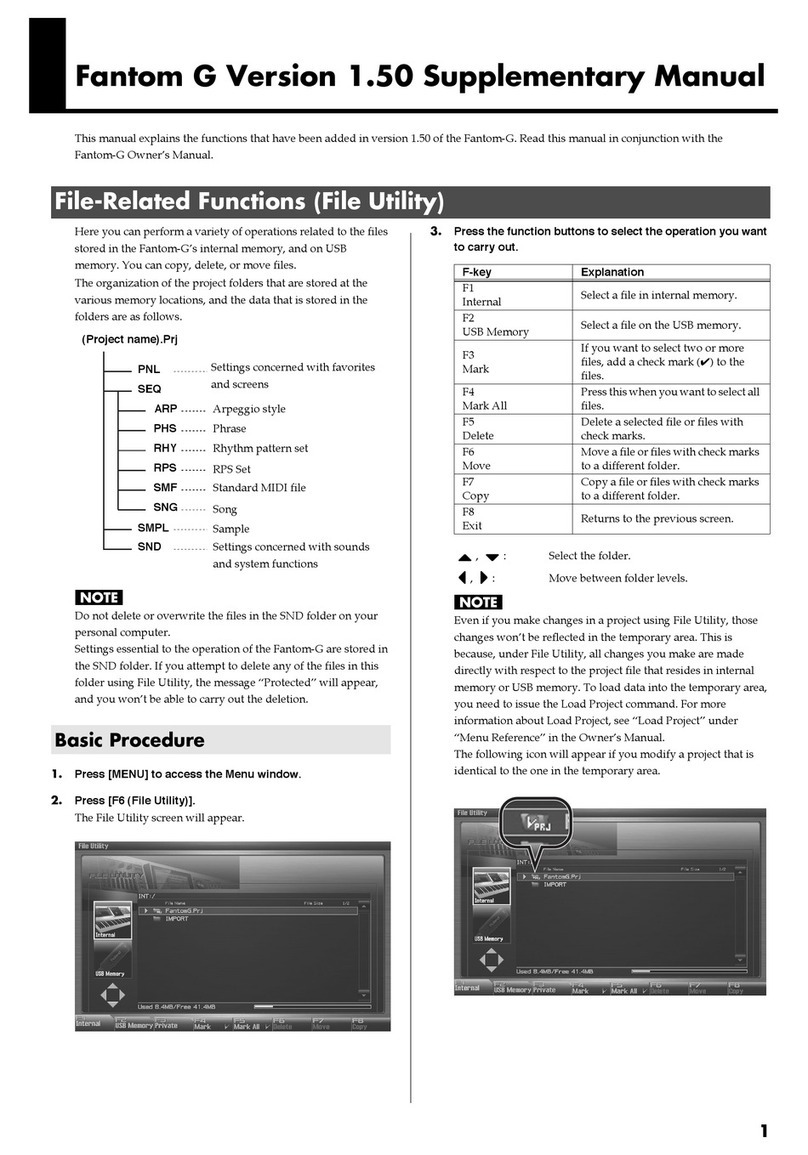
Roland
Roland Fantom-G none Supplementary manual

Lenovo
Lenovo ThinkCentre A70 Hardware Maintenance Manual

Dell
Dell Dimension H7228 owner's manual

Lenovo
Lenovo ThinkCentre 1982 Hardware Maintenance Manual
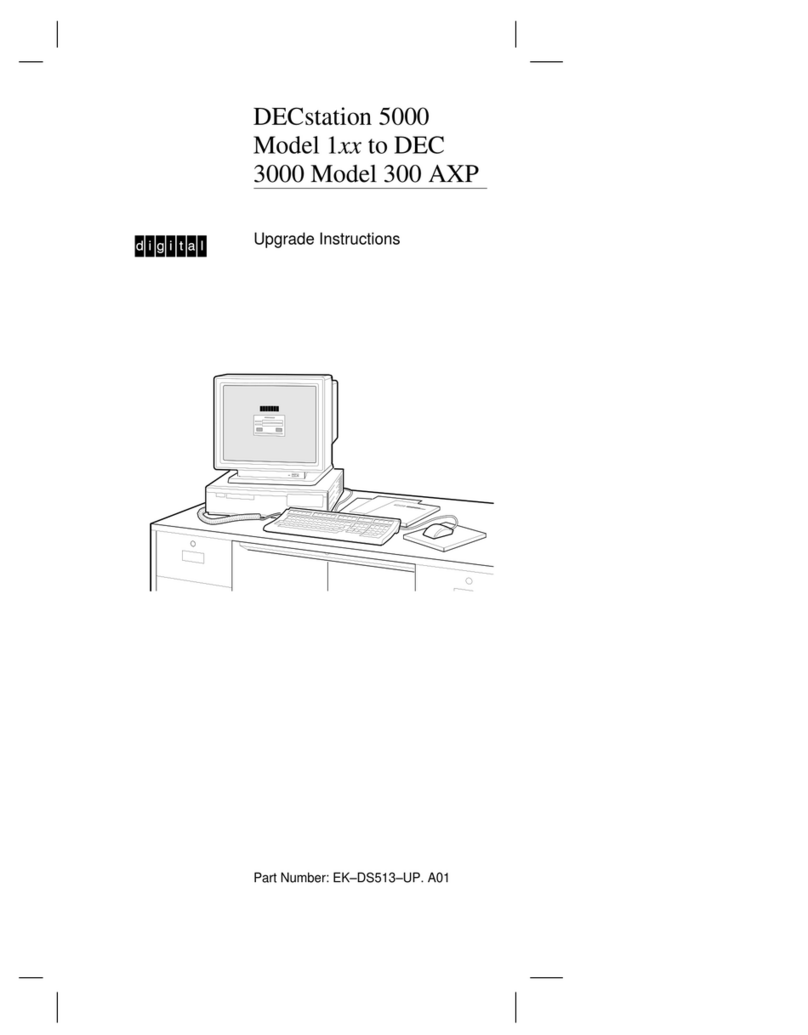
Digital Equipment
Digital Equipment DECstation 5000 Upgrade instructions
